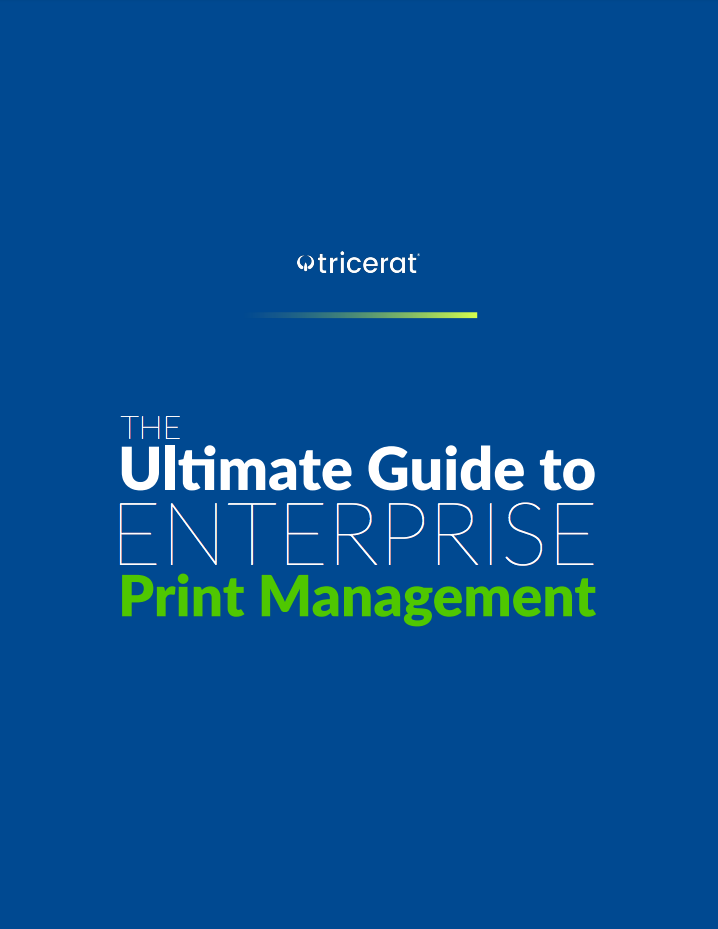The Digital Workspace Ecosystem Alliance (DWEA) conducted a survey to assess the state of the digital workplace. Based on the responses from 2,660 IT decision makers, DWEA's "State of the Digital Workspace 2023" report provides a roadmap to help you make better informed decisions as you hone your strategies.
Based on the results of this survey, DWEA has released a webinar series on a number of topics, including “Moving Printing to the Cloud Is Becoming an Essential Piece of Cloud Migration Strategy”. In the Cloud Printing webinar, Andrew Parlette (CTO, Tricerat) and Philip Sellers (Solutions Architect, XenTegra) utilize the survey results to discuss a range of topics.
What is Cloud Printing?
Cloud printing is a technology that allows users to print documents from anywhere, at any time, using cloud-based services. It involves sending print jobs from a device connected to the internet to a printer that is also connected to the internet, without the need for any physical cables or software installations. Cloud printing can be done using a variety of devices, including smartphones, laptops, and desktop computers, and supports various file formats, including PDF, Microsoft Office, and image files. This technology eliminates the need for physical proximity between the printer and the device, making printing more convenient and efficient for users.
What are the benefits of Cloud Printing?
There are multiple benefits to cloud printing, including:
- Convenience - Cloud printing allows users to print from anywhere, at any time, using any device with an internet connection. This makes it easier to print documents while on the go or away from the office.
- Flexibility - With cloud printing, users can print from a variety of devices and file types, including smartphones, tablets, laptops, and desktop computers. This provides greater flexibility for users and eliminates the need for specific software or hardware.
- Improved Productivity - Cloud printing can improve productivity because it allows users to print quickly and easily without needing to be physically present at the printer. This can save time and increase efficiency in the workplace.
- Enhanced Security - Cloud printing can offer enhanced security features, such as authentication and access controls, to protect sensitive documents from unauthorized access. This can help organizations to meet their compliance and regulatory requirements.
What are the challenges of Cloud Printing?
Despite its benefits, cloud printing also has some challenges that organizations and users may face:
- Internet connectivity - Cloud printing relies on a stable internet connection. Poor connectivity can result in slow printing speeds or failed print jobs.
- Security risks - Cloud printing can pose security risks, such as the interception of print jobs or the unauthorized access of sensitive documents. It is important to implement proper security measures, such as encryption and access controls, to mitigate these risks.
- Compatibility issues - Cloud printing requires compatible devices and software. Some older printers may not be compatible with cloud printing, and users may need to purchase new printers or upgrade their existing ones.
- Service outages - Cloud printing services may experience outages or downtime, which can impact the ability to print. It is important to have contingency plans in place in case of such incidents.
- Cost - While cloud printing can be cost-effective in the long run, there may be initial costs associated with upgrading or replacing printers and implementing new software or security measures.
Moving to the Cloud
With all of these benefits and challenges, organizations have a lot to think about when moving workspaces and printing to the cloud. Top of Form Cloud printing has many of the same challenges as on-prem VDI, plus the higher likelihood of untrusted devices or mobile use cases. According to the DWEA report, 93% of organizations view cloud printing as part of their overall cloud strategy, 97% of respondents manage printing environments, more than half report issues with hybrid workforce and remote locations, and about one-third struggle with driver management. Because of these challenges, many organizations are considering print management solutions.
What is Print Management?
Print management software is a tool used to manage and control printing operations within an organization. It provides a centralized platform for monitoring and controlling printing tasks, such as printer usage, printer assignments, driver management, and job prioritization. The software can be used to optimize printing processes, reduce printing costs, and improve document security.
What are the benefits of Print Management?
Print management software can be used to:
- User Assignments - Print management software can help sys admins easily and efficiently assign the correct printers to the correct users, ensuring security and reducing printing-related tickets.
- Control Print Quotas - Print management software can be used to set print quotas for users or departments, ensuring that printing resources are used efficiently and fairly.
- Prioritize Print Jobs - Print management software can be used to prioritize print jobs based on factors such as urgency or the type of document being printed.
- Secure Printing - Print management software can be used to implement security measures such as user authentication, encryption, and access controls to prevent unauthorized access to sensitive documents.
- Reduce Waste - Print management software can help organizations reduce printing waste by implementing rules such as duplex printing or limiting color printing.
Overall, print management software can help organizations improve their printing operations by providing greater visibility, control, and efficiency.
To hear more on the topic of cloud printing, click below to watch the webinar.

